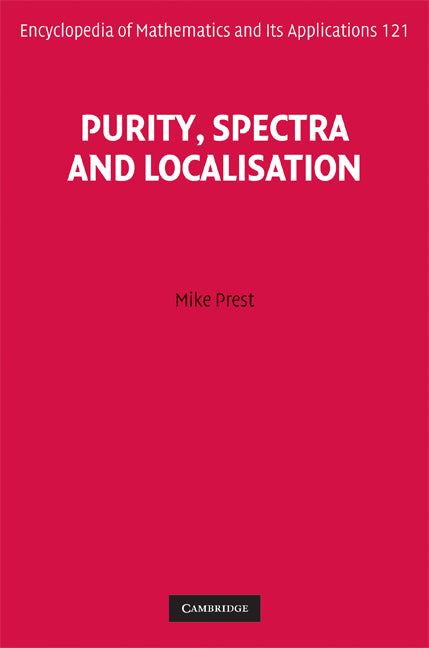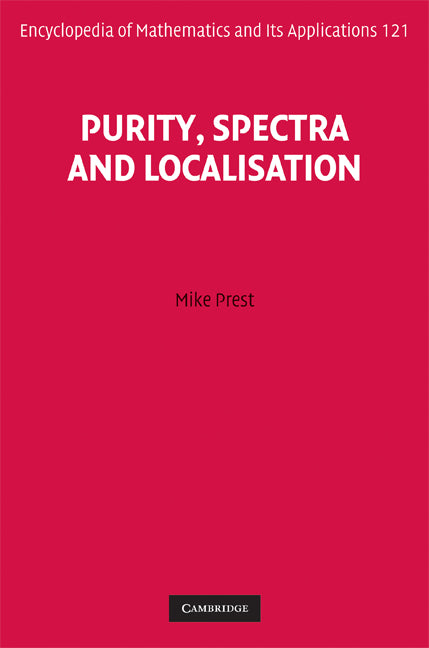Freshly Printed - allow 8 days lead
Couldn't load pickup availability
Purity, Spectra and Localisation
A unified, coherent account of the algebraic aspects and uses of the Ziegler spectrum.
Mike Prest (Author)
9780521873086, Cambridge University Press
Hardback, published 4 June 2009
798 pages
24 x 16.4 x 4.5 cm, 1.35 kg
'This very interesting book is written so that it will be useful for graduate students and experienced researchers. It is worth to be mentioned that Mike Prest introduced in this book some very useful appendixes which come to help the reader to become familiar with the language of model theory. The book contains a lot of illuminating examples which are also very helpful for the reader.' Zentralblatt MATH
It is possible to associate a topological space to the category of modules over any ring. This space, the Ziegler spectrum, is based on the indecomposable pure-injective modules. Although the Ziegler spectrum arose within the model theory of modules and plays a central role in that subject, this book concentrates specifically on its algebraic aspects and uses. The central aim is to understand modules and the categories they form through associated structures and dimensions, which reflect the complexity of these, and similar, categories. The structures and dimensions considered arise particularly through the application of model-theoretic and functor-category ideas and methods. Purity and associated notions are central, localisation is an ever-present theme and various types of spectrum play organising roles. This book presents a unified, coherent account of material which is often presented from very different viewpoints and clarifies the relationships between these various approaches.
Preface
Introduction
Part I. Modules: 1. Pp conditions
2. Purity
3. Pp pairs and definable subcategories
4. Pp-types and pure-injectivity
5. The Ziegler spectrum
6. Rings of definable scalars
7. m-dimension and width
8. Examples
9. Ideals in mod-R
A. Model theory
Part II. Functors: 10. Finitely presented functors
11. Serre subcategories and localisation
12. The Ziegler spectrum and injective functors
13. Dimensions
14. The Zariski spectrum and the sheaf of definable scalars
15. Artin algebras
16. Finitely accessible and presentable additive categories
17. Spectra of triangulated categories
B. Languages for definable categories
C. A model theory/functor category dictionary
Part III. Definable categories: 18. Definable categories and interpretation functors
D. Model theory of modules: an update
E. Glossary
Main examples
Bibliography
Index.
Subject Areas: Algebra [PBF]


